Toyota Prius Mk3
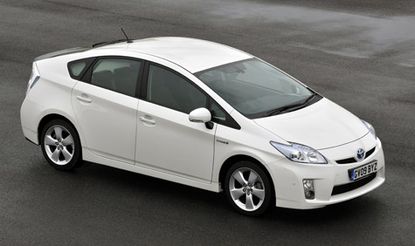
The cultural history of the Toyota Prius is an object lesson in how to soften up consumers and get new tech into the marketplace.
Easily the most famous hybrid car in the world, a position attained by the twin prong strategy of being first and being persistent, the Prius is now in its third incarnation.
On sale in Europe from Autumn 2009, Prius Mk3 builds upon the buzz of the first two cars, enhancing the efficiency of Toyota's hybrid drive system and generally fleshing out the look and feel so that – to all intents and purposes – the Prius acts no differently from a conventional car.
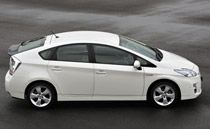
This last point is crucial. While the first Prius of 1997 was visually bland it garnered attention thanks to the high-profile list of celebrity owners. By the time the second generation car broke cover in 2004, the company had coaxed its design team into slightly more self-expression, in the process creating the 'hybrid style' most recently aped by the Honda Insight. Prius III is more of the same, bulbous rather than sleek, but with a faint echo of old-school American futurism in its swooping lines and large lamp glasses. It's as if we're getting very late deliveries of a future promised a half century ago.
Features
Inside, the cabin is airy, although fixtures and fittings are lightweight (the doors shut with a metallic 'sproing' that implies cost, rather than weight, efficiencies). The dashboard is far less confusing than the earlier cars, condensing the complex inner workings of the car into an easy-to-read display. In a nutshell, the Prius’s Hybrid Synergy Drive has a petrol engine supported by a bank of batteries, which are charged through kinetic energy generated by braking. At rest, the engine switches off altogether, and the latest model also offers an 'EV' mode that allows the car to coast along on electric power alone, albeit at limited speeds and very limited range. While keener Prius prodders managed to hack second-generation cars to perform a similar function, the superior hybrid tech and better batteries in the new car make this eerily quiet electric mode a genuinely futuristic experience.
Wallpaper* Newsletter
Receive our daily digest of inspiration, escapism and design stories from around the world direct to your inbox
Fuel efficiency
The real-world advantages of ultra fuel efficiency are plain to see; it's easy to understand why people become 'hypermilers', that subset of West Coast hybrid geeks who devote their time to extracting every last inch from each drop of gasoline. For this is a machine that rewards smoothness and deliberate, methodical driving. There's something supremely satisfying about ramping up the high mileage stats; equally, you can understand why the car's detractors accuse Prius drivers of being smug.
Conclusion
It's also important to note that this mid-size car isn't exactly a nippy city machine: it's not an urban car, but a suburban one. Perhaps in American terms - the Prius's largest market - it feels small, but in densely packed Europe the car offers no real advantages in terms of parking or manoeuvrability. Ultimately, however, none of this matters. The Prius is an utterly practical, discretely designed and easy-to-use machine, one that delivers some of the very lowest CO2 figures on the market, as well as all-important exemption from London's congestion charge. The Prius continues to push gently at our perceptions of what an everyday car should be, implying that the ongoing revolution in automotive technology will be a velvet one.
Jonathan Bell has written for Wallpaper* magazine since 1999, covering everything from architecture and transport design to books, tech and graphic design. He is now the magazine’s Transport and Technology Editor. Jonathan has written and edited 15 books, including Concept Car Design, 21st Century House, and The New Modern House. He is also the host of Wallpaper’s first podcast.
-
 Spanish design studio Masquespacio's new HQ is a historical mansion bursting with colour
Spanish design studio Masquespacio's new HQ is a historical mansion bursting with colourDesign studio Masquespacio presents its new home and office, a bold and unique space in a beautifully refurbished historic villa near Valencia
By Léa Teuscher Published
-
 Surreal, uncanny, seductive: step into Graham Little’s world
Surreal, uncanny, seductive: step into Graham Little’s worldScottish artist Graham Little presents his first US retrospective at The FLAG Art Foundation in New York
By Hannah Silver Published
-
 Junya Ishigami designs at Maniera Gallery are as ethereal as his architecture
Junya Ishigami designs at Maniera Gallery are as ethereal as his architectureJunya Ishigami presents new furniture at Maniera Gallery in Belgium (until 31 August 2024), following the series' launch during Milan Design Week
By Ellie Stathaki Published
-
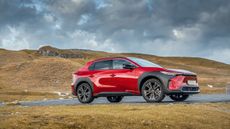 Toyota bz4X SUV is the marque’s first pure electric vehicle
Toyota bz4X SUV is the marque’s first pure electric vehicleThe Toyota bz4X is our first chance to explore how the long-standing masters of mass automobile production make an EV
By Jonathan Bell Published
-
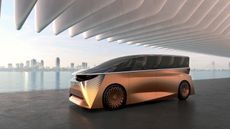 The debut Japan Mobility Show saw the country’s carmakers preview the near future
The debut Japan Mobility Show saw the country’s carmakers preview the near futureThe 2023 Japan Mobility Show offered up a vast array of futuristic transportation, from concept sports cars to autonomous taxis, and eVTOL aircraft
By Jonathan Bell Published
-
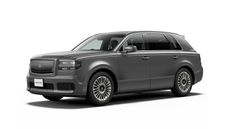 Toyota Century SUV is a new approach to low-key old-school luxury
Toyota Century SUV is a new approach to low-key old-school luxuryThe new hybrid Toyota Century SUV sees the marque take its luxury division to the global market for the first time
By Jonathan Bell Published
-
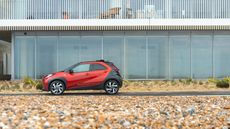 Toyota Aygo X is designed for the rough and tumble of the city
Toyota Aygo X is designed for the rough and tumble of the cityCompact, competent and free from any overheated ego, the Toyota Aygo X is the socially acceptable face of the combustion engine
By Jonathan Bell Published
-
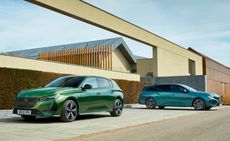 Peugeot’s sparky 308 gets hybrid power and handsome lines
Peugeot’s sparky 308 gets hybrid power and handsome linesThe Peugeot 308 proves that mass-market design needn’t be dull, blending hybrid power with sharp lines and excellent detailing
By Jonathan Bell Published
-
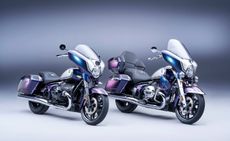 BMW Motorrad brings out the big guns for its newest cruisers
BMW Motorrad brings out the big guns for its newest cruisersBMW Motorrad R 18 Bagger and Transcontinental set the tone for high-voltage cruising with a brand collaboration with speaker specialist Marshall
By George Chapman Last updated
-
 Dacia’s new Manifesto concept is a true outdoor utility vehicle
Dacia’s new Manifesto concept is a true outdoor utility vehicleUtilitarian auto brand Dacia sets a bold new agenda with its Manifesto, a concept car pitched at the active outdoor market
By Jonathan Bell Last updated
-
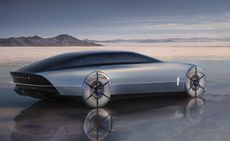 The sun sets on traditional supercars at California’s Monterey Car Week
The sun sets on traditional supercars at California’s Monterey Car WeekMonterey Car Week, the world’s most prestigious car gathering, is showcasing ever-more extravagant special editions, coachbuilt cars and all-new electric concepts. Here are seven key machines from 2022
By Rory FH Smith Last updated